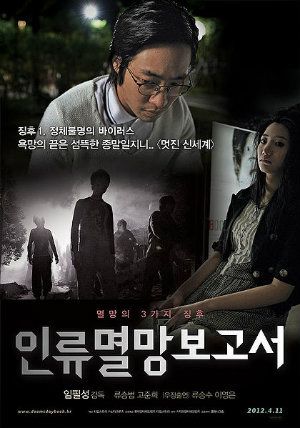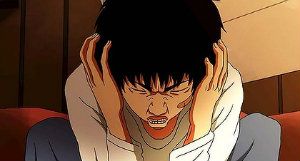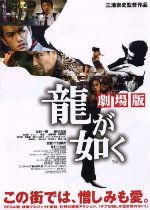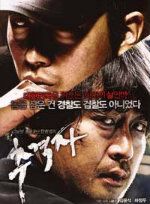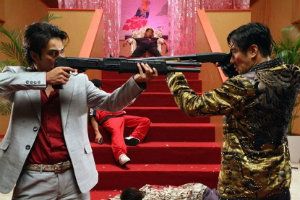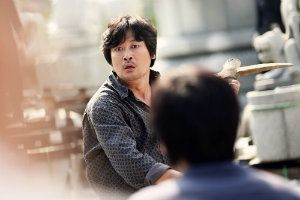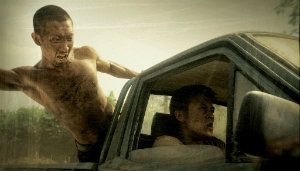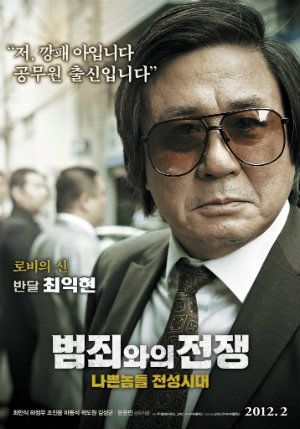
1990: A roundish, eager to please looking man who is well into middle age sits behind the bars of a prison cell. A shrewd looking district attorney, unimpressed with his pleasantries, demands a statement of all of his wrongdoings over the course of the past decade. Rewind to 1982, this same man, though more diminished in appearance, patrols the local harbor as a customs officer. He and his cohorts make a regular practice of skimming profits, taking bribes and other pocket lining elicit activity until one evening, during an inspection, he and a colleague come upon a huge quantity of coke. Sensing that they are in over their heads but unable to turn away the huge potential financial rewards, they seek counsel with the neighborhood gangster to put the drugs in more capable hands while at the same time ensuring they receive a cut of the action.
We go on to see the events before, after, and between these two points, that relate to this often harrowing trip from one to the other. The escapades of the not quite nameless gangster, Choi (so named directly after the leading actor portraying him, Choi Min-sik, an act of tribute on the part of the director), might have ended right after the drug sale if not for a cursory connection between the customs officer and the gangster by way of their shared family name and a particularly Korean concept of showing honor to those of the same ancestral clan.
So Choi Ik-Hyun, the elder customs officer and Choi Hyung-Bae, the younger gang leader form an awkward connection dancing around the tangles of traditional ancestral hierarchy and the more practical rules of respect for those above the law. Their relationship takes center stage as it weathers the storm of rival gangs, international prominence, political turmoil and police crackdowns. Ik-Hyun is too shrewd to pass up the opportunity to make a fortune and too proud to abandon his involvement when things become dangerous. Hyung-Bae also comes to like having the older Choi around; he sees in him both an approving paternal figure and at the same time someone in awe of his prowess.
As time progresses, the balance of power shifts in some ways. Ik-Hyun’s penchant for making and maintaining high level contacts, or greasing palms if you will proves to be an asset to Hyung-Bae’s organization. Especially during this time when maintaining one’s freedom in the face of guilt has as much to do, if not more, with having the right connections as an airtight defense. Soon Ik-Hyun fashions himself a powerful player, instructing Hyung-Bae on proper etiquette among highly influential officials. While not without its perks, it’s an uneasy fit for the more traditional gangster and an odd play for power continues to pervade their tenuous relationship.
Despite his rise in the ranks, Ik-Hyun is never a true gangster no matter how hard he tries. Early on Choi puffs out his chest at the local casino with a karate instructor soon to be younger brother-in-law in tow for security, another character who gets way more than he bargained for. Yet, he is genuinely surprised, hurt even, when the a rival gang’s leader laugh off his proposal for a more equitable arrangement with the casino owner. A stubborn idealism on Ik-Hyun’s part even finds him dealing with that same rival gang leader later on, feeling that he’s earned the right to do business as he sees fit. The trouble it lands him in with Hyun-Bae finds the disheartened gangster empty of bravado, instead seeking pity for his misstep.
Choi Min-Sik’s masterful multifaceted performance captures our attention throughout these proceedings. Before the film is over he will cower, boast, negotiate, and grovel. There is also the split between his gang activity and family life. Brief snippets appear throughout, in which he welcomes his younger sister's suitor to the family and nags his son to keep up his studies. Few actors can pull off such a seamless transition from one mood to another.
Besides Choi Min-Sik, at least two other individuals involved in the movie should receive strong praise. One is director Yun Jong-Bin who, with only a few feature productions under his belt, took on this rather epic project. Not only are there many plot intricacies to keep track of, but also a historical context that demands careful attention. Yun depicts signifiers of the time with the same aplomb that Fincher brought to Zodiak. Music, for instance, is cleverly used to mark the timeframe of the story with the government crackdown of the ‘90s set to a suspenseful score (think the moody beat driven sounds of movies like The Yellow Sea and The Unjust), and ‘80s Korean fuzzed out rock and early pop punctuate the gangsters’ rise to prominence. Bridging the two modes is a cover (by Chang Kiha and the Faces) of a psychedelic pop tune, I Heard a Rumor, with organs even more swirling and fuzzed out than on the original.
The other is Ha Jung-Woo who plays Hyung-Bae. He is an actor that has building an impressive resume of his own, playing complex emotionally challenged characters. See his work in such films as Time, My Dear Enemy, and The Yellow Sea for an idea of his impressive range. Here he gives a great turn as a stone faced gang leader with subtle cracks in his facade that indicate his weakness for Ik-Hyun. His scenes with Choi Min-Sik show off an electrifying chemistry, especially during a frantic final confrontation.
On a few points, Nameless Gangster reminds me of aspects of The Wire. Considering that show’s reputation as a highly realistic crime drama, that comes as a compliment. First is the interesting resemblance between Ik-Hyun and Season 2’s Frank Sobotka, himself a dock worker, who finds himself in a position where crime pays too much to turn down. Both think of their families as they head down channels that bring them closer and closer into conflict with the law. More pointedly is the split between a new and old type of gangster. Both dramas focus on traditional gangsters, like a Hyun-Bae or Avon Barksdale, who grow disinterested, threatened even when the business end of their game comes to take a more dominant role in the enterprises they have established.
When the movie reaches its conclusion, we come to a distant present day, in a scene that speaks of the passing of time from one generation to the next. It does feel very much like coming to the end of a hard travelled journey. One that has spanned years, political change, and personal trauma.
